Address
304 North Cardinal
St. Dorchester Center, MA 02124
Work Hours
Monday to Friday: 7AM - 7PM
Weekend: 10AM - 5PM
Address
304 North Cardinal
St. Dorchester Center, MA 02124
Work Hours
Monday to Friday: 7AM - 7PM
Weekend: 10AM - 5PM
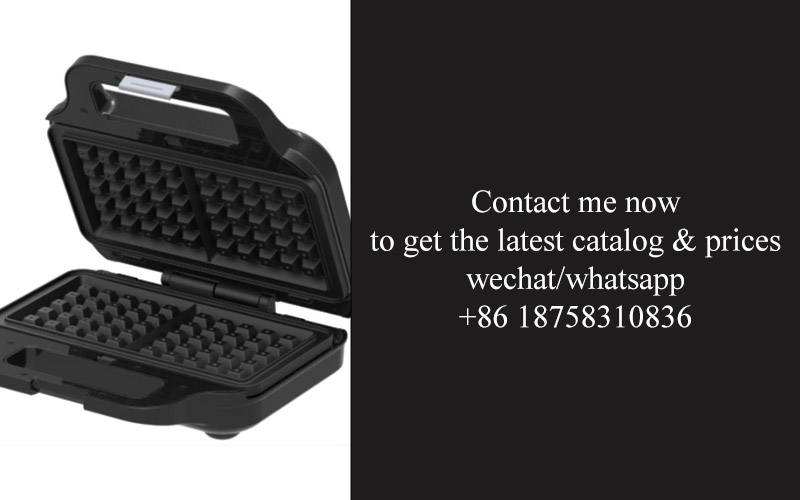
In a world where technology and convenience intertwine, the kitchen has become more than just a space for cooking. It’s a hub of innovation and efficiency, where appliances play a pivotal role. Today, we delve into the evolution of kitchen appliances, highlighting the latest marvel: the -30°C Cold Resistant Model. This isn’t just another gadget; it’s a testament to how far we’ve come and where we’re heading in the realm of culinary technology.
In the ever-evolving world of kitchen appliances, innovation is the key to staying ahead. Today, we’re thrilled to introduce a game-changer that’s poised to redefine what’s possible in the culinary domain—the -30°C Cold Resistant Model. This groundbreaking appliance isn’t just designed to handle the demands of your kitchen—it’s built to withstand the harshest of climates.
Picture this: a frigid -30°C environment. Many appliances would falter, but not this marvel. The -30°C Cold Resistant Model is engineered to operate flawlessly in extreme cold, making it a must-have for homeowners in chillier climates or those who simply want a reliable kitchen companion.
What sets this model apart is its robust build and cutting-edge technology. From the insulated exterior to the state-of-the-art internal components, every detail has been meticulously crafted to ensure that it remains a steadfast workhorse even when temperatures plummet.
One of the standout features of this appliance is its thermal management system. It’s designed to maintain optimal performance and energy efficiency, no matter how low the temperatures drop. This not only preserves your food but also ensures that your energy bills remain manageable.
The interior of the -30°C Cold Resistant Model is a testament to thoughtful design. With ample storage space and adjustable shelving, it offers the perfect solution for organizing your pantry or freezing goods. The easy-to-use digital controls provide precise temperature regulation, so you can rest assured that your frozen foods will remain frozen, and your fresh produce will stay crisp.
Safety is another cornerstone of this model. With anti-slip surfaces and automatic defrosting features, it’s designed with the user’s peace of mind in mind. The energy-efficient compressor not only helps to reduce your carbon footprint but also contributes to the appliance’s longevity.
But let’s not forget about the aesthetic appeal. The sleek, modern design of the -30°C Cold Resistant Model complements any kitchen décor, whether you’re in a cozy cottage or a bustling city apartment.
In terms of versatility, this model excels. Whether you’re a seasoned chef or a culinary novice, the -30°C Cold Resistant Model is up to the task. From preserving delicate herbs to freezing homemade ice cream, its capabilities are virtually limitless.
But what about the rest of your kitchen appliances? The -30°C Cold Resistant Model isn’t just a stand-alone star—it’s a piece of a larger, cohesive system. With its advanced connectivity, it can be easily integrated with other smart appliances in your home, allowing for seamless control and monitoring through your smart device.
Now, let’s delve into the market trends. The kitchen appliance industry is constantly evolving, and one of the current trends is the emphasis on durability and resilience. Consumers are seeking appliances that can withstand the test of time, and the -30°C Cold Resistant Model delivers on this front.
Industry analysts have been buzzing about this model, and for good reason. It represents a new standard in kitchen appliance technology, offering both functionality and style. Its ability to thrive in extreme conditions sets it apart from the competition, making it a top choice for those who value performance above all else.
Customer feedback has been overwhelmingly positive. Homeowners who have tested the -30°C Cold Resistant Model are raving about its reliability and efficiency. Many have reported that it has become an indispensable part of their daily lives, not just in the kitchen but throughout their homes.
Looking ahead, the potential impact of this model on the market is significant. It’s not just about a new appliance; it’s about the new expectations it sets for kitchen technology. As more consumers come to appreciate the importance of extreme cold resistance, we can expect to see a surge in demand for similar models in the future.
So, how can you get your hands on this groundbreaking appliance? Look for it at select retailers or order it directly from the manufacturer’s website. It’s worth the wait, and once you have it, you’ll wonder how you ever managed without it.
In conclusion, the -30°C Cold Resistant Model isn’t just an appliance—it’s a statement of innovation and commitment to quality. It’s a game-changer that redefines what’s possible in the world of kitchen appliances, and it’s ready to bring its impressive capabilities into your home.

In the world of kitchen appliances, the cold can be a silent adversary. Whether it’s the chill of winter or the frosty temperatures in certain regions, the ability of a kitchen appliance to withstand extreme cold is no mere luxury—it’s a necessity. Let’s delve into the challenges posed by extreme cold and why it matters for kitchen appliances.
The first challenge is the physical integrity of the appliance itself. At temperatures as low as -30°C, materials can contract, expand, or even degrade. Plastic components might become brittle, metal can become prone to cracking, and electronic circuits can malfunction. Designing a kitchen appliance that can maintain its structural and functional integrity in such conditions is a feat of engineering.
Cold also affects the performance of appliances. For instance, refrigerators and freezers need to keep their contents cold, but in sub-zero temperatures, the insulation must be exceptional to prevent the cold from seeping in. This means thicker and more robust insulation materials, which can increase the size and weight of the appliance. Ovens and cooktops, on the other hand, must still be able to heat food efficiently despite the surrounding cold, which can be a challenge for heat retention and distribution.
Another challenge is the usability of the appliance. In cold climates, hands can become numb quickly, making it difficult to manipulate buttons, dials, or touchscreens. An appliance designed for cold resistance must have intuitive controls and be easy to operate, even when the user’s fingers are stiff with cold.
The cold can also impact the safety of kitchen appliances. For example, a water heater that is not designed for extreme cold might experience issues with water pressure, leading to leaks or even burst pipes. Similarly, a range or stove must have safety features that are not compromised by cold temperatures, such as reliable gas valves and flame sensors.
Energy efficiency becomes a critical factor in cold climates. Appliances that are not designed to handle cold temperatures might consume more energy to maintain their functions, which can lead to higher utility bills and a greater environmental footprint. A -30°C cold resistant model must optimize energy use to minimize waste and keep costs down.
Moreover, the durability of components is paramount. Regularly exposed to extreme cold, appliance parts can wear down faster. From hinges to door seals, every component must be selected for its resilience and ability to withstand repeated cycles of freezing temperatures.
Innovation in materials science plays a crucial role in overcoming these challenges. Specialized plastics, metals, and composites are developed to be flexible in the cold, reducing the risk of cracking. Insulation materials are engineered to have high thermal resistance, ensuring that the appliance maintains its temperature without excessive energy use.
Furthermore, the design of the appliance must account for the thermal shock that can occur when cold air comes into contact with warm surfaces. This can cause rapid temperature changes that could damage the appliance. The design must include features that mitigate this risk, such as thermal barriers or materials that can absorb and distribute heat more evenly.
Lastly, the user experience must be considered. An appliance that is cold resistant should also be comfortable to use in cold conditions. This means ergonomically designed handles, touchscreens that are responsive in cold weather, and controls that are easy to grip and operate.
In conclusion, the challenges of designing a kitchen appliance that can withstand extreme cold are multifaceted. From material selection and insulation to usability and safety, every aspect of the appliance must be meticulously considered. By addressing these challenges, manufacturers can ensure that their products are reliable, efficient, and user-friendly, even in the coldest climates.
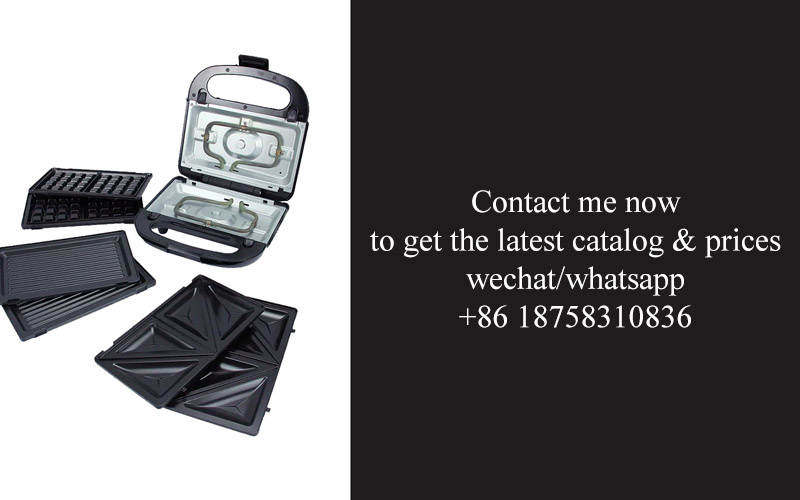
The European and American kitchen appliance markets, both distinct in their dynamics and consumer preferences, have evolved into vibrant sectors with a plethora of innovations. Europe, known for its sophisticated design and eco-conscious consumers, often leads the way in integrating cutting-edge technology with aesthetic appeal. Meanwhile, the United States boasts a diverse market that caters to a wide range of lifestyles and budgets.
In Europe, the market is segmented into several key categories, each with its own set of trends and demands. The premium segment, which includes brands like Siemens, Miele, and Gaggenau, focuses on high-end appliances with smart features and premium materials. These appliances are not just about functionality but also about the status they confer on the kitchen. The mid-range market, populated by brands like Bosch and LG, offers a balance between innovation and affordability, appealing to a broad consumer base.
The U.S. market, on the other hand, is marked by its diversity. From the bustling cities to the sprawling suburbs, the demand for kitchen appliances varies widely. The premium market in the U.S. is similar to Europe’s, with brands like Wolf and Thermador offering top-of-the-line appliances that are often integrated into custom kitchen designs. However, the U.S. also has a robust mass market, where brands like GE, Whirlpool, and KitchenAid dominate with their wide range of products that cater to different budgets and preferences.
In Europe, energy efficiency is a significant driver in the kitchen appliance market. The region has stringent energy standards, and consumers are increasingly looking for appliances that not only perform well but also help reduce their carbon footprint. Smart appliances, which can be controlled remotely via smartphones or voice assistants, are also gaining traction, reflecting a broader trend towards connected homes.
In the U.S., while energy efficiency is still a concern, the market is more focused on convenience and performance. Consumers are willing to invest in appliances that offer the latest features, such as self-cleaning ovens, induction cooktops, and dishwashers with advanced soil detection. The American market also sees a strong demand for multi-functional appliances, like refrigerators that can double as wine cellars or ovens that can bake and grill simultaneously.
Another key difference lies in the types of appliances that are popular in each region. In Europe, the focus is often on compact and integrated appliances, which are designed to fit seamlessly into modern kitchen layouts. This includes integrated dishwashers, cooktops, and refrigerators that blend into cabinetry. In the U.S., there’s a preference for standalone appliances that offer versatility and can be placed in various locations within the kitchen.
Branding also plays a crucial role in both markets. European brands tend to emphasize heritage, craftsmanship, and innovation, while American brands often focus on functionality, innovation, and a wide range of product offerings. This branding strategy helps differentiate products and resonates with specific consumer segments.
The European and American kitchen appliance markets also reflect the broader economic and social changes in each region. For instance, the rise of urbanization in Europe has led to a growing demand for smaller, more efficient appliances that can be easily integrated into smaller living spaces. In the U.S., the trend towards home improvement and the creation of open-concept kitchens has spurred demand for high-quality, stylish appliances that can serve both a functional and decorative role.
The markets are also influenced by demographic shifts. In Europe, the aging population has increased the demand for appliances that are easy to use and maintain, such as those with automated features. In the U.S., the rise of the millennial generation has brought a focus on sustainability and smart technology, which is reflected in the types of appliances being developed and sold.
In conclusion, the European and American kitchen appliance markets are dynamic and diverse, each with its unique characteristics and trends. Understanding these differences is crucial for manufacturers looking to enter or expand their presence in these markets, as it requires a nuanced approach to product development, marketing, and distribution.
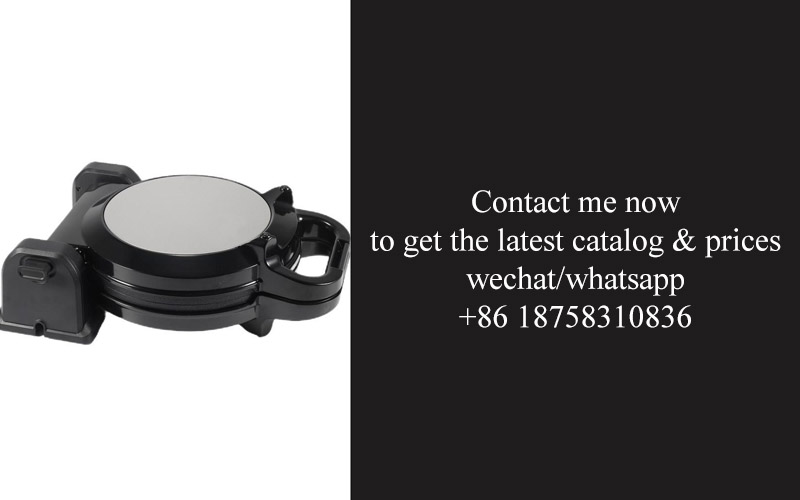
The European and American kitchen appliance markets are dynamic and diverse, each with its unique characteristics and consumer preferences. From the sleek designs favored in Europe to the practicality and energy efficiency demanded in the States, these markets offer a glimpse into the future of home technology.
In Europe, kitchen appliances are often seen as an extension of the home’s aesthetic. The design is paramount, with a focus on sleek lines and high-quality materials. German manufacturers, in particular, are renowned for their engineering precision and durability, with appliances that not only perform well but also look sophisticated. The European market is also keen on sustainability, with an increasing number of consumers opting for energy-efficient models that are both eco-friendly and cost-effective.
American consumers, on the other hand, tend to place a stronger emphasis on functionality and versatility. Appliances are expected to be reliable and to offer a wide range of features. The market is saturated with brands that cater to different lifestyles, from single individuals living in urban apartments to large families in suburban homes. Energy efficiency is still a key factor, but so is the convenience of smart technology, which allows users to control their appliances remotely and manage their kitchen operations more efficiently.
One cannot discuss these markets without noting the rise of smart kitchen appliances. In Europe, the integration of IoT (Internet of Things) technology has been gradual but steady, with a growing number of consumers embracing the benefits of connectivity. Smart fridges, for example, not only keep food fresh but also provide users with dietary recommendations and the ability to manage their food inventory.
In the U.S., smart appliances are more prevalent, with a significant portion of the market already incorporating advanced technologies. The emphasis on convenience is evident in features like voice-activated controls, app integration, and predictive maintenance, which help to extend the life of the appliance and reduce downtime.
Another key difference lies in the size and scale of the appliances. In Europe, kitchen spaces are often smaller, leading to the development of compact and space-saving appliances. American kitchens, on the other hand, tend to be larger, allowing for the installation of larger, more powerful appliances that can handle more intensive cooking tasks.
Both markets have a strong preference for stainless steel finishes, which are seen as timeless and clean. However, in the U.S., black and black stainless steel finishes are also gaining popularity, offering a more modern and minimalist look.
When it comes to cooking appliances, Europe and the U.S. have different preferences. European consumers are fond of induction cooktops and ovens, which are efficient and quick. They also appreciate the ease of cleaning that comes with glass cooktops. American kitchens, while also embracing induction, often feature traditional gas ranges for their powerful heat and the ability to cook at different temperatures simultaneously.
Refrigerators in both regions are getting larger and more sophisticated, with French door models leading the way. They offer the convenience of a side-by-side fridge and a bottom-freezer, making it easier to access fresh produce and chilled items.
Finally, the market for small kitchen appliances in both Europe and the U.S. is thriving. From coffee makers to blenders to air fryers, there’s a seemingly endless array of gadgets designed to make life easier and cooking more enjoyable. The trend towards health and wellness has also influenced this segment, with a growing interest in appliances that promote healthier eating habits, such as slow cookers and multi-functional countertop ovens.
In summary, while there are differences in the preferences and design sensibilities of the European and American kitchen appliance markets, there is also a clear overlap in the demand for energy-efficient, smart, and innovative appliances that enhance the cooking experience and reflect the evolving lifestyle of consumers.
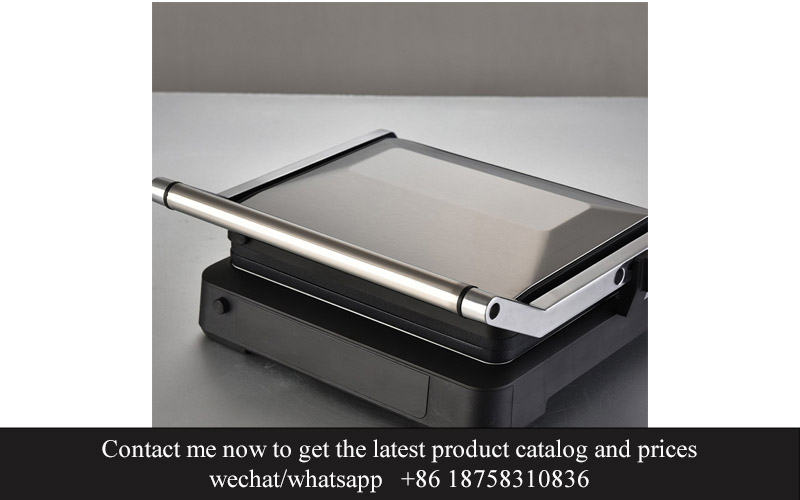
In the realm of kitchen appliances, innovation isn’t just about adding new features; it’s about creating solutions that truly enhance the user experience. The -30°C Cold Resistant Model is a testament to this principle, offering a range of features and benefits that set it apart from the competition. Here’s a closer look at what makes this model truly unique.
The appliance’s design is not just about aesthetics; it’s a functional masterpiece. The sleek, modern exterior is crafted from premium materials that not only look stunning but also withstand the rigors of daily use. The cold-resistant capabilities are evident in the reinforced insulation that keeps the appliance running smoothly in extreme temperatures, ensuring that your kitchen stays cool even on the coldest of days.
One of the standout features of the -30°C Cold Resistant Model is its advanced temperature control system. Unlike traditional appliances that struggle to maintain a consistent temperature, this model offers precise adjustments that cater to various cooking needs. Whether you’re defrosting frozen goods, chilling a bottle of wine, or preserving fresh ingredients, the model’s intelligent technology ensures optimal performance every time.
Durability is another key aspect that differentiates this model. The use of high-quality stainless steel components means that the appliance can withstand heavy use and harsh kitchen environments. The doors are reinforced with special locking mechanisms that not only provide security but also protect against accidental damage, making it a reliable choice for busy households.
Energy efficiency is a critical consideration in today’s market, and the -30°C Cold Resistant Model does not disappoint. It incorporates state-of-the-art energy-saving technologies that reduce power consumption without compromising on performance. This not only saves money on electricity bills but also contributes to a greener planet.
For those who appreciate smart technology, the -30°C Cold Resistant Model offers a range of smart features. The integrated Wi-Fi capability allows users to control the appliance remotely via a smartphone app, making it easy to manage your kitchen even when you’re not at home. The app provides real-time updates, alerts for maintenance, and the ability to set custom temperature settings, offering unparalleled convenience.
Safety is paramount in kitchen appliances, and the -30°C Cold Resistant Model excels in this area. The appliance is equipped with multiple safety features, including child locks, anti-slip feet, and automatic shut-off systems. These features prevent accidents and ensure that the appliance operates safely at all times.
The model’s modular design is also a game-changer. Users can easily customize the interior layout to fit their specific needs, whether that’s adjusting the shelf positions or adding extra storage options. This flexibility means that the appliance can grow with your kitchen habits and preferences over time.
In terms of environmental impact, the -30°C Cold Resistant Model is ahead of the curve. It uses eco-friendly refrigerants that have a lower environmental impact than traditional options, contributing to a more sustainable future. Additionally, the appliance is designed with recycling in mind, ensuring that it can be responsibly disposed of at the end of its lifespan.
The -30°C Cold Resistant Model also offers a range of user-friendly features that make it stand out. The intuitive digital display is easy to read and navigate, even in low-light conditions. The quiet operation ensures that the appliance runs smoothly without creating a disturbance in your kitchen.
The appliance’s internal lighting is another thoughtful addition. The LED lights provide a clear view of the contents inside, whether you’re checking on food or restocking supplies. This feature is particularly useful for those who have difficulty seeing in low-light environments.
Finally, the -30°C Cold Resistant Model is designed with the end-user in mind. The ergonomic handles and smooth closing mechanisms make it easy to open and close the appliance, even when it’s fully loaded. The door hinge is designed to prevent the door from swinging open unexpectedly, adding an extra layer of safety.
In summary, the -30°C Cold Resistant Model’s unique features and benefits are what set it apart. From its innovative design and advanced temperature control to its durability, energy efficiency, and smart technology, this appliance is a testament to the kind of innovation that can truly transform the way we interact with our kitchen spaces. Whether you’re a culinary enthusiast or a busy parent, this model offers a solution that is both practical and stylish, making it an excellent choice for any modern kitchen.
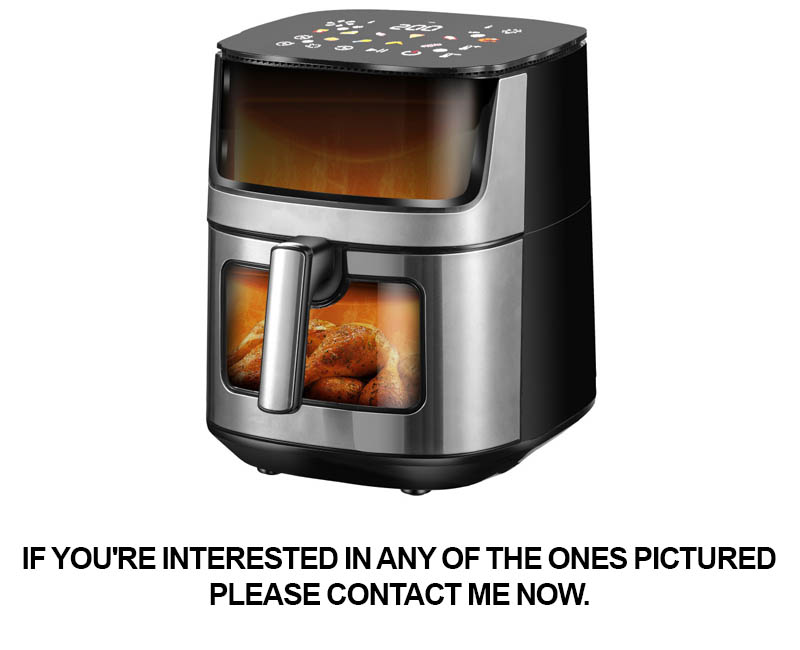
In the ever-evolving landscape of kitchen appliances, staying ahead of the curve is crucial. The latest industry analysis offers several key insights into the trends shaping the market, from smart technology integration to eco-friendly designs. Here are some of the notable trends that are reshaping the way we think about kitchen appliances:
Smart Integration: The rise of the Internet of Things (IoT) has brought smart appliances into the mainstream. Consumers are increasingly looking for kitchen gadgets that can connect to their smartphones or home automation systems, allowing for remote control and monitoring. This trend is expected to continue, with a growing number of appliances featuring voice-activated controls and AI-driven features.
Energy Efficiency: As environmental concerns grow, so does the demand for energy-efficient appliances. The latest models are not only designed to save energy but also to reduce carbon footprints. Features like LED lighting, energy-saving modes, and the ability to optimize energy use are becoming standard, attracting eco-conscious consumers.
Customization and Personalization: Modern kitchen appliances are no longer one-size-fits-all. The market is seeing a shift towards customizable and personalized products that cater to specific user needs. From adjustable settings on ovens and refrigerators to modular kitchen systems, consumers are looking for appliances that can be tailored to their preferences and lifestyle.
Compact and Space-Saving Designs: Urban living and the trend towards smaller homes have led to a demand for compact kitchen appliances. These include countertop microwaves, compact refrigerators, and multi-functional appliances that can perform various tasks while taking up minimal space. This trend is likely to persist as urban populations continue to grow.
Healthy Cooking Options: With a growing awareness of health and wellness, kitchen appliances are now offering features that promote healthier cooking methods. Induction cooktops, which are more energy-efficient and safer than traditional electric or gas burners, are becoming popular. Additionally, appliances with steam cooking capabilities are on the rise, as they allow for low-fat and nutrient-rich cooking.
Smart Storage Solutions: Refrigerators and freezers are not just for food preservation anymore. The latest models come with advanced storage solutions that help organize and manage food supplies more effectively. Features like temperature-controlled drawers, smart shelves, and even built-in sensors that track food spoilage are becoming common.
Durability and Longevity: In a market where appliances are expected to last for years, consumers are seeking products that are built to last. This means using high-quality materials, robust construction, and innovative designs that can withstand daily use and last for decades. Appliances with extended warranties and reliable customer service are gaining traction.
Aesthetics and Design: While functionality is king, the aesthetics of kitchen appliances are also a significant factor. Sleek designs, color options, and finishes that complement modern kitchen interiors are increasingly important. The market is seeing a blend of form and function, with appliances that are not only practical but also visually appealing.
Health and Safety Features: With safety being a top priority, kitchen appliances are incorporating more health and safety features. This includes anti-scald technology in cooktops, child locks on ovens and refrigerators, and automatic shut-off functions to prevent accidents. These features are becoming standard in many high-end models.
Sustainability and Ethics: The market is also taking note of the sustainability and ethical practices behind the production of kitchen appliances. Consumers are more likely to support brands that prioritize environmentally friendly manufacturing processes and use sustainable materials. This trend is likely to grow as more people become conscious of the environmental impact of their purchases.
The latest industry analysis paints a picture of a kitchen appliance market that is becoming more advanced, efficient, and user-centric. As these trends continue to develop, the future of kitchen appliances looks to be a blend of cutting-edge technology, environmental responsibility, and personalized convenience.

In the world of kitchen appliances, the -30°C Cold Resistant Model has garnered a cult following. Here are just a few of the real-life experiences shared by customers who’ve embraced this groundbreaking technology:
“I’ve lived in extreme cold climates my entire life, and I’ve always struggled with kitchen appliances that can’t withstand the harsh winter conditions. The -30°C Cold Resistant Model has been a game-changer. It’s like having a chef in my kitchen, even when the temperature outside is plummeting.”
“My wife and I recently moved to a cabin in the mountains, and we were worried about our appliances not working properly. The -30°C model was a must-have for us. It’s been a breeze to use, and we can finally enjoy fresh, homemade meals without worrying about the cold affecting our appliances.”
“I own a small bakery, and the -30°C Cold Resistant Model has been a lifesaver. It allows me to keep my ingredients at the perfect temperature, ensuring that my baked goods always turn out perfect. It’s not just a kitchen appliance; it’s an investment in the quality of my products.”
“I was skeptical at first, but the -30°C Cold Resistant Model has proven to be more reliable than any other appliance I’ve ever owned. Whether I’m chilling my drinks or freezing my leftovers, this machine does it all without skipping a beat.”
“Living in a remote area, we don’t always have access to the same conveniences as those in urban areas. The -30°C Cold Resistant Model has given us the ability to enjoy modern kitchen appliances without the need for a generator or additional power sources. It’s a testament to the advancements in technology.”
“I’ve been a fan of the brand for years, and the -30°C Cold Resistant Model is their crowning achievement. It’s beautifully designed and incredibly efficient. The fact that it can handle extreme cold is just the cherry on top.”
“One of the best features of the -30°C Cold Resistant Model is its energy efficiency. It doesn’t consume more power than it needs to maintain the desired temperature, which has saved us a lot on our utility bills. Plus, it’s quiet and doesn’t disrupt our daily routines.”
“I travel a lot for work, and the -30°C Cold Resistant Model has made it possible for me to take my kitchen with me. It’s lightweight and compact, yet it doesn’t compromise on performance. It’s a game-changer for frequent travelers who want to enjoy a slice of home, no matter where they are.”
“From the moment I laid eyes on the -30°C Cold Resistant Model, I knew it was something special. The attention to detail in its construction and the seamless integration of technology into a practical appliance are unparalleled. It’s a marvel of modern engineering.”
“The customer service team at the -30°C Cold Resistant Model’s manufacturer has been incredibly supportive. They’ve answered all my questions and provided guidance on the best ways to use the appliance. It’s refreshing to see a company that genuinely cares about its customers.”
“I’ve had my -30°C Cold Resistant Model for over a year now, and it’s still going strong. The build quality is exceptional, and it’s evident that the designers put a lot of thought into the durability and functionality of the appliance.”
“My family and I have had a blast experimenting with different recipes since we got our -30°C Cold Resistant Model. We’ve tried everything from making homemade ice cream to freezing fresh herbs, and it’s always been a success. It’s a versatile appliance that has brought joy to our kitchen.”
In conclusion, the -30°C Cold Resistant Model has left an indelible mark on the kitchen appliance industry. Its ability to thrive in extreme cold, coupled with its innovative features and the positive experiences of its customers, makes it a standout choice for anyone looking to elevate their kitchen experience.
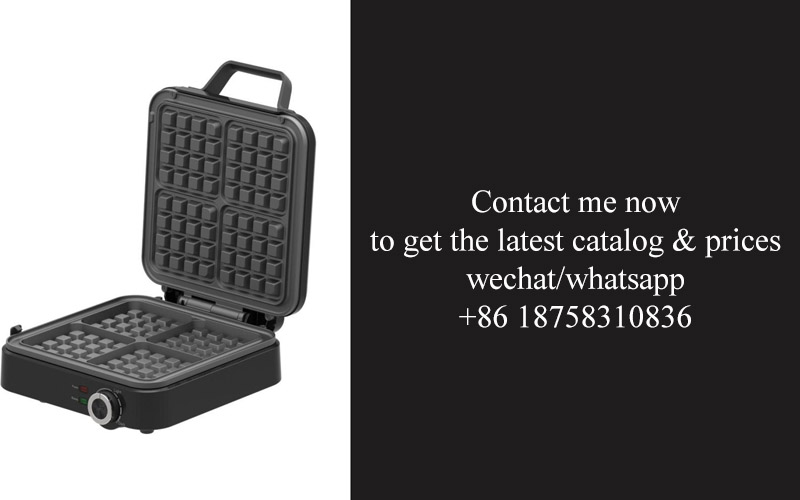
The evolution of kitchen appliances has been a testament to human ingenuity and the ever-growing need for convenience and efficiency. As we stand on the brink of technological advancements, the future of kitchen appliances is shaping up to be transformative. Here are some predictions and potential impacts that could redefine how we interact with our kitchen gadgets.
Appliances that learn and adapt to user habits are no longer a futuristic concept; they are becoming a reality. Smart kitchen appliances, equipped with artificial intelligence, are poised to predict and cater to our needs before we even realize them. Imagine a refrigerator that knows when you’re running low on milk and automatically places an order for a new supply, or an oven that adjusts its settings based on the type of dish you’re preparing. This level of personalization is not just about convenience; it’s about creating a seamless cooking experience.
Energy efficiency is another area that’s set to make a significant impact. With climate change concerns at the forefront, manufacturers are focusing on creating appliances that consume less energy while still delivering optimal performance. Innovations like LED lighting, energy-saving motors, and intelligent power management systems are becoming standard features. The potential here is not only to reduce our carbon footprint but also to save homeowners substantial amounts on their energy bills.
The integration of IoT (Internet of Things) technology is also reshaping the kitchen appliance landscape. Appliances that can connect to each other and to the user’s smart devices through Wi-Fi or Bluetooth are becoming more common. This interconnectedness allows for remote monitoring and control, which is particularly beneficial for those who want to check on their appliances while away from home. For instance, you could start your coffee pot brewing or preheat your oven via your smartphone, making your morning routine smoother and more efficient.
Material science is advancing rapidly, and this is trickling down to kitchen appliances as well. Lightweight yet durable materials are being used to create appliances that are not only functional but also aesthetically pleasing. For example, the use of high-quality stainless steel for cooktops and ovens not only improves durability but also enhances the visual appeal of the kitchen. This blend of functionality and style is changing how consumers perceive kitchen appliances.
Another significant trend is the focus on health and wellness. Consumers are increasingly interested in appliances that can help them prepare healthier meals. This includes appliances that can accurately measure ingredients, suggest recipes, and even clean themselves with minimal environmental impact. For instance, dishwashers that use less water and energy while effectively sanitizing dishes are becoming more popular.
The rise of modular kitchen appliances is also noteworthy. These are appliances that can be customized and combined to suit individual preferences and kitchen layouts. Think of a modular refrigerator with interchangeable shelves and compartments, allowing users to tailor the storage space to their specific needs. This modular approach not only makes it easier to fit appliances into compact spaces but also allows for easier upgrades and replacements.
Lastly, the concept of sustainability is taking center stage. Manufacturers are looking beyond the lifespan of the appliance to consider the entire lifecycle, from production to disposal. This means designing appliances that are easy to repair, upgrade, and recycle. The impact of this trend could be profound, leading to a more circular economy where resources are conserved and waste is minimized.
In conclusion, the future of kitchen appliances is marked by intelligence, efficiency, connectivity, and sustainability. These advancements are not just about making cooking easier but also about enhancing our quality of life, reducing environmental impact, and embracing a more personalized and adaptable lifestyle. As technology continues to evolve, the kitchen will become a hub of innovation, where every gadget serves a purpose beyond mere utility.
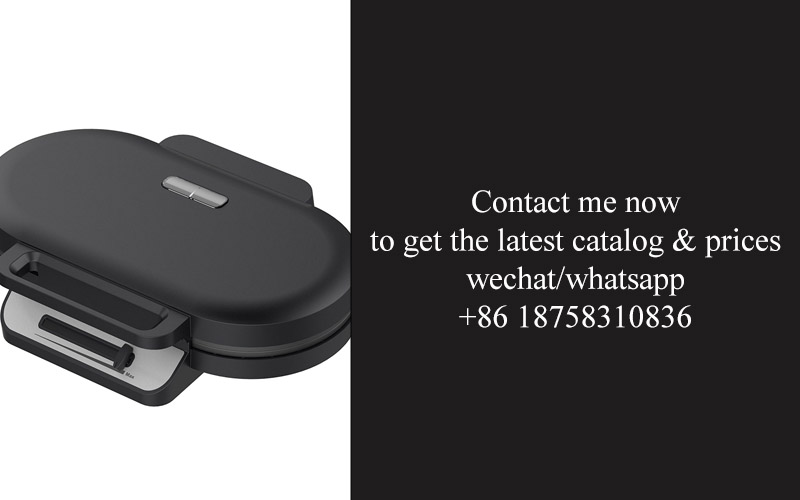
Navigating the market for the cutting-edge -30°C Cold Resistant Model can be a bit of a treasure hunt, but it’s well worth the effort. Here’s how you can ensure you don’t miss out on this marvel of modern kitchen technology:
Discovering the Retail LandscapeYou’ll find that this model isn’t just available in a single location; it’s scattered across various retail channels. From specialty kitchen appliance stores to large home improvement chains, the -30°C Cold Resistant Model is making its mark. It’s a good idea to explore multiple stores to compare prices, warranties, and customer service.
Online Shopping: A Convenient OptionFor those who prefer the convenience of shopping from home, online platforms are your best bet. Major electronics retailers, as well as kitchen specialty websites, offer the -30°C Cold Resistant Model. Be sure to check for customer reviews and compare shipping options to find the most convenient and cost-effective way to get your hands on this appliance.
Seeking Out Special Sales and DealsThe appliance world is no different from the rest when it comes to sales and discounts. Keep an eye out for seasonal promotions, Black Friday deals, or end-of-year sales. These can significantly reduce the price of the -30°C Cold Resistant Model, making it more accessible to budget-conscious consumers.
Exploring Alternative RetailersDon’t be afraid to venture outside the big-box stores. Local appliance shops, hardware stores, and even online marketplaces like eBay and Amazon may offer the -30°C Cold Resistant Model at competitive prices. These alternative retailers can also provide personalized service and after-sales support.
Checking for Warranty and Return PoliciesBefore making your purchase, ensure that you understand the warranty and return policies. Since this is a premium appliance, you’ll want to know that it’s covered for any manufacturing defects. Also, check the return period and conditions to safeguard your investment.
Inquiring About Installation ServicesIf you’re not confident in your ability to install the -30°C Cold Resistant Model yourself, many retailers offer installation services. This can be a significant advantage, especially if you’re dealing with a complex or large appliance. It’s worth inquiring about these services when you make your purchase.
Joining Loyalty Programs and Exclusive OffersMany retailers have loyalty programs that reward customers with discounts, free gifts, or early access to new models. Signing up for these programs can not only help you get a better deal on the -30°C Cold Resistant Model but also keep you informed about future products and promotions.
Purchasing from Reputable BrandsWhen it comes to high-quality kitchen appliances, brand reputation matters. Look for well-established brands known for their reliability and customer service. Purchasing from a reputable brand can ensure that you’re getting a product that stands up to the extreme cold resistance and will last for years to come.
Understanding the Financing OptionsIf the -30°C Cold Resistant Model is a bit out of your budget, don’t despair. Many retailers offer financing options that allow you to spread the cost over several months or even years. This can make the purchase more manageable and give you the luxury of the cold-resistant appliance you desire.
Social Media and Brand CommunitiesFinally, join social media groups and online forums dedicated to kitchen appliances. These communities can be invaluable resources for finding the -30°C Cold Resistant Model, getting recommendations, and learning about the experiences of others who have already made the purchase. You might even find exclusive deals or insider tips that aren’t advertised elsewhere.
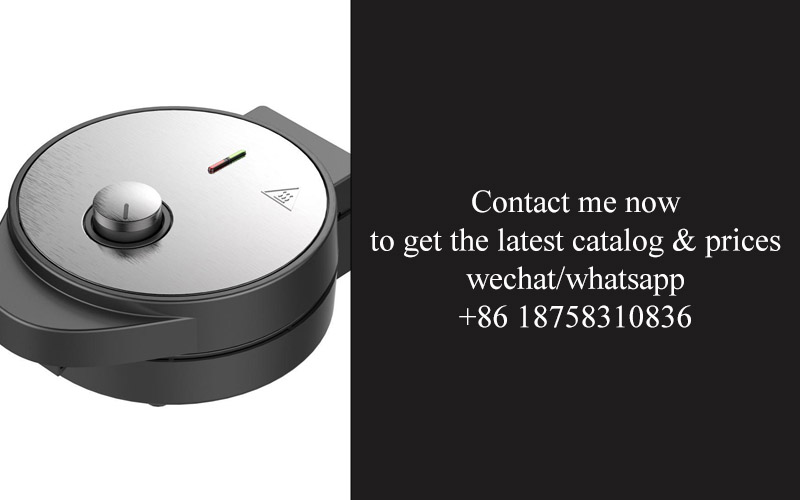
In the ever-evolving world of kitchen appliances, innovation isn’t just a buzzword; it’s a driving force that reshapes how we interact with our daily culinary routines. Embracing innovation means understanding that every corner of the kitchen, from the fridge to the oven, can be a canvas for new possibilities. Here are some thoughts on why innovation is key to modern kitchens and how it can enhance our lives.
Consider the way technology has transformed cooking. Once a labor-intensive task, it’s now possible to achieve culinary masterpieces with the touch of a button. Smart appliances, for instance, have become integral to many modern kitchens, offering features like automatic programming, remote monitoring, and even AI-driven meal recommendations. But it’s not just about convenience; it’s about the potential to create dishes that were once out of reach for the average home cook.
Modern appliances are not just more advanced; they’re also more intuitive. Touchscreen interfaces, voice commands, and even gesture controls have replaced the old toggle switches and dials. This shift towards simplicity makes kitchen tasks more accessible to a wider range of users, including those with disabilities or limited mobility. The future of kitchen appliances is one where technology works seamlessly with humans, not against them.
Energy efficiency is another area where innovation has made a significant impact. As concerns about climate change grow, so does the demand for appliances that consume less energy. This shift is not just about saving money on utility bills; it’s about reducing our carbon footprint and contributing to a more sustainable future. The latest appliances are equipped with eco-friendly features that optimize energy use, from LED lighting to energy-saving modes that automatically turn off appliances when not in use.
Safety is a paramount concern in kitchen design, and innovation has brought about significant advancements in this area as well. Smart ovens and cooktops can detect if a pan is left unattended and automatically shut off to prevent fires. Refrigerators now have child locks and temperature control systems that prevent harmful bacteria from thriving. These features not only protect us but also give us peace of mind, allowing us to focus on our cooking without constant worry.
The customization of kitchen appliances is also a trend that’s gaining momentum. Modern appliances come in a variety of sizes, styles, and finishes, allowing homeowners to choose the perfect match for their kitchen decor. From sleek stainless steel to retro pastel colors, the options are endless. This level of personalization extends beyond aesthetics; it also includes functionality. Users can now select appliances with specific features tailored to their cooking habits and dietary needs.
In terms of connectivity, the kitchen has become a hub of smart technology. Appliances can be linked to each other and to the home network, creating a seamless ecosystem that enhances efficiency and convenience. Imagine preheating your oven while on your way home or adjusting the temperature of your fridge with a simple tap on your smartphone. The future of kitchen appliances is one where everything is interconnected, allowing for a more cohesive and responsive cooking environment.
While innovation brings about new possibilities, it also presents challenges. There’s a need for continuous education to ensure that consumers can make informed decisions about the technology they bring into their homes. Additionally, as appliances become more complex, there’s a growing demand for user-friendly manuals and customer support to help navigate these new features.
When it comes to the emotional connection to the kitchen, innovation can sometimes be a double-edged sword. While new technologies can make cooking more enjoyable and less of a chore, there’s a risk that they might disconnect us from the traditional cooking experience. It’s important to find a balance where technology enhances the cooking process without overshadowing the pleasure of cooking itself.
As we look to the future, the kitchen will continue to be a place of innovation. From the development of new materials that can withstand extreme temperatures to the integration of health and wellness features, the possibilities are vast. It’s a future where kitchen appliances will not only serve functional purposes but also become companions that can anticipate and fulfill our needs.
In embracing innovation in every kitchen, we’re not just updating our appliances; we’re updating our lifestyle. It’s about creating a space that not only looks beautiful but also functions harmoniously, supporting our health, our habits, and our dreams of culinary perfection. Whether it’s a -30°C cold-resistant model or a high-tech oven that can cook a perfect roast with a single setting, the future of kitchen appliances is one that promises to make every meal an experience worth savoring.